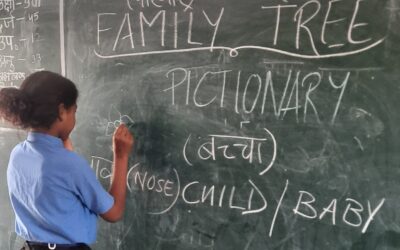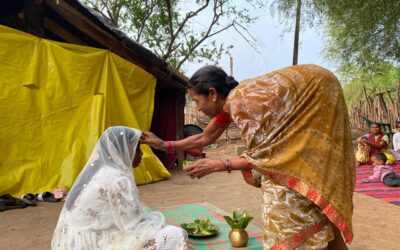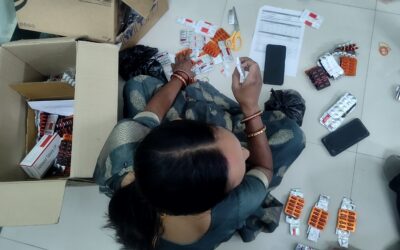During the first wave of the pandemic, the areas where Swasthya Swaraj works such as Thuamul Rampur Block in Kalahandi, were relatively unaffected, even though many migrant workers from here, go to metropolitan cities in Andhra Pradesh, West Bengal and Kerala. There were no news of people falling sick or losing lives because of fever and breathlessness. A large part of it was also due to the fact that in the first wave, COVID-19 affected the elderly more, and the life expectancy in this region is exceptionally less. However, things were different in the second wave, and with the current trends, a large amount of precautions will need to be taken to deal with the possibility of a third wave.
Swasthya Swaraj has been conducting COVID awareness camps in almost 80 villages. I have been to many of these villages with the help of our dedicated field staff. My first such visit was to Nengunguda. To reach here, from the nearest Metropolitan town Bhubaneshwar, one has to take an overnight bus to Bhawanipatna, followed a 5-hour jeep ride to a village called Melghara, and then a 5 kilometre walk to this village. There is no mobile network. The roads are terrible, filled with streams and puddles, and there is no public transport that even comes close to the village. On reaching here, we asked around if anyone had fever, breathlessness or any other symptoms. While we did not expect that nobody would have symptoms, we were shocked on hearing what they had to tell.

“Everybody has fever, headache, diarrhea and body pains!”, they said.
We asked “What do you mean everyone? What about breathlessness?”
“There is at least one person in each household who has these symptoms.
Some elders are having trouble breathing”While we could not test everyone, the symptoms were similar to what one experiences when they have COVID-19. Also, these symptoms had never seen to be so widespread otherwise, especially at this time of the year. Assuming that it was in fact Coronavirus, it was devastating to see how it had even penetrated in one of the most isolated villages in an underdeveloped region of the country.
One more sign of the spread of pandemic was the fact that we started receiving a lot of patients in clinics, with the same symptoms, and all we could do was to ask them to get tested and treated in Rampur or Bhawanipatna. We even heard about unexpected deaths in the villages, young earning members in the families passing away. However, the Odisha government was making no efforts to approach this region. We chose to do whatever we could, to bring out the reality, and have even arranged a ‘Mobile COVID Test Unit’ which would go to all the villages to carry out tests and distribute medicines.
It was not easy to do any of these tasks. Just going to the villages to spread awareness about the disease met with resistance from the community. It was amazing to see how fast the fake-news had travelled to this region, even without internet or network. A lot of people believed that the vaccination is a scheme to harvest kidneys, and death is almost certain after getting vaccinated. Everybody knows that one might get fever after taking a dose, and they’re scared.
While the news might be fake, their fears are not irrational. Even the side affects of the vaccine can prove to be fatal in an area where malnutrition and diseases like Malaria are so prevalent. Additionally, they have no reason to trust the government or outsiders, as they have only caused destruction and distress. It is a challenge to spread awareness to prevent the disease, and hence, the strategy of the organization also shifted more towards controlling the symptoms if they become serious.
We made a brochure for visual representation of all the symptoms and danger signs of the virus, as most people do not know how to read. We asked them to immediately go to a doctor in case of particularly severe symptoms. Educated youth in the villages were collectivised and organised to speak against fake news and to promote vaccination. Recently, we even went to a local cricket tournament and using the speaker system, explained the theory as well as the benefits of getting vaccinated.
But we cannot permeate everyone. It was heartbreaking to see the pamphlet about COVID awareness being torn and thrown on the ground right after we distributed it. I wouldn’t be surprised if we found them in the form of paper boats in the streams. Even the youth that we spoke to, might have said different things in their homes. They may not have the drive to actively promote precautionary ways. When our COVID team went to the villages, barely one or two people come to get tested, that too after we offered snacks. From the report of the community health representatives, we knew that there were many more people with symptoms who had not shown up.

As the world prepares for a third wave, Kalahandi has to prepare for its second, and one that can cause a lot of damage due to the existing conditions of the community. With the monsoons approaching, accessibility is going to be severely affected, and we all just hope that the situation doesn’t worsen for these wonderful people here.




0 Comments